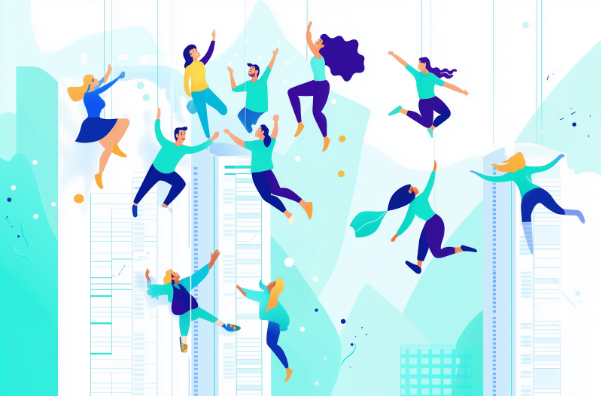The power of effective visuals: How to create visual reports that make you more memorable

Humans are not designed to digest large data by text alone
The difference in a decimal place or percentage might be better represented visually. A pie chart, for instance, can quickly tell the user how much of a concern the data under question is when compared to the rest of the picture. A scatter plot can quickly uncover an outliner, while a line graph can show rises and falls in datasets without having to scroll back through a document.
Graphics bring documents to life by presenting the entire picture in one frame. But they also connect on a more emotional level. Even when our understanding of data isn’t perfect, a graphic illustrates the story of greater and lesser values more clearly than a sentence can. We can clearly see when a value has dipped, and with a red line, we can tell if that value dipping is bad. Similarly, we can tell if something has risen and if it having done so is positive based on colour, visual queues and perhaps a brief description.
Moreover, we’re inclined to take in graphics instead of skimming reports. In presentations, in particular, this is essential to getting key points across in presentations. Unless you’re sending a full report first and you’re confident of everyone reading your report before the meeting, graphics are key to ensuring people engage with the information you’re presenting. People rarely like to read long reams of text on a slideshow, as it distracts from the presentation.
Knowing how to use the right graphics.
The trouble with churning out reports again and again, it becomes harder to see things from your clients point of view. Regulators will often tell you what needs to be included to issue you a compliant report, but you are now writing for an auditor or regulator rather than for your client who is paying the bill.
Accuracy in a report is everything for industries that rely on accurate data reporting, including ecology, geotechnical, land contamination and surveying. Even when the client doesn’t have the training to understand all the information provided, the report presented represents a potentially huge investment on their behalf.
Delivering with accuracy.
Unlike other interactive reports, Datanest is designed for the users to capture and manage their own data, meaning the most qualified person becomes the story teller. . But the primary benefit is the connection between the user data gathering and user driven presentation, which other software doesn’t offer.
Since Datanest is designed to first gather relevant information on the field, most of the organising of datasets begins before anything is loaded into the presentation format. Compare that with working from a manual entry Excel spreadsheet (although you can export Datanest entries into an Excel sheet if you prefer). The Gather module allows you to set the specific datasets worth capturing, including any outliers or incongruous data, which is then instantaneously recognised and organised in the Hub.
Becoming more memorable .
How often have you written a report and has the client called or emailed to ask about something that is within your report?
We retain 80% of what we see, by creating interactive maps that guide your client through their site highlighting issues makes you instantly more memorable. You can communicate complex ideas with simple queues, which not only gets everyone on the same page but can also help to retain your services further down the track for additional work.
Visual reports have been designed so that they can be easily created by those that have worked on the project ensuring that the correct message is being communicated effectively. .
Visual Reports
Graphs aren’t all Datanest can do. Using the Visual Reports tool, you can create a slideshow comparable to any you might design on another presentation software. Again, where Datanest has an advantage is that it allows you to easily import information from Gather and Hub, including any graphs you’ve made. Visual Reports also allow you to;
- Import whole tables and block out certain sample sixes or fields, depending on what’s of interest to the presentation
- Import maps or base maps relevant to your investigation
- Create data insights from within the presentation, furthering styling your graphs
- Upload images, 3D representations, videos and other attachments
- Export reports immediately as live links or send them to others via email
Datanest might not be right for all presentations, but the software stands out where complex datasets need to be gathered and turned into readable graphics and reports. The most significant difference is the way Datanest can quickly interpret industry-specific datasets without needing to renter them into a spreadsheet to create a reliable graph. So, if your graph can summarise your report more succinctly, Datanest can shorten the time spent generating that report, giving you quicker, more reliable deliverables which communicate value where you need it the most.





.png)

